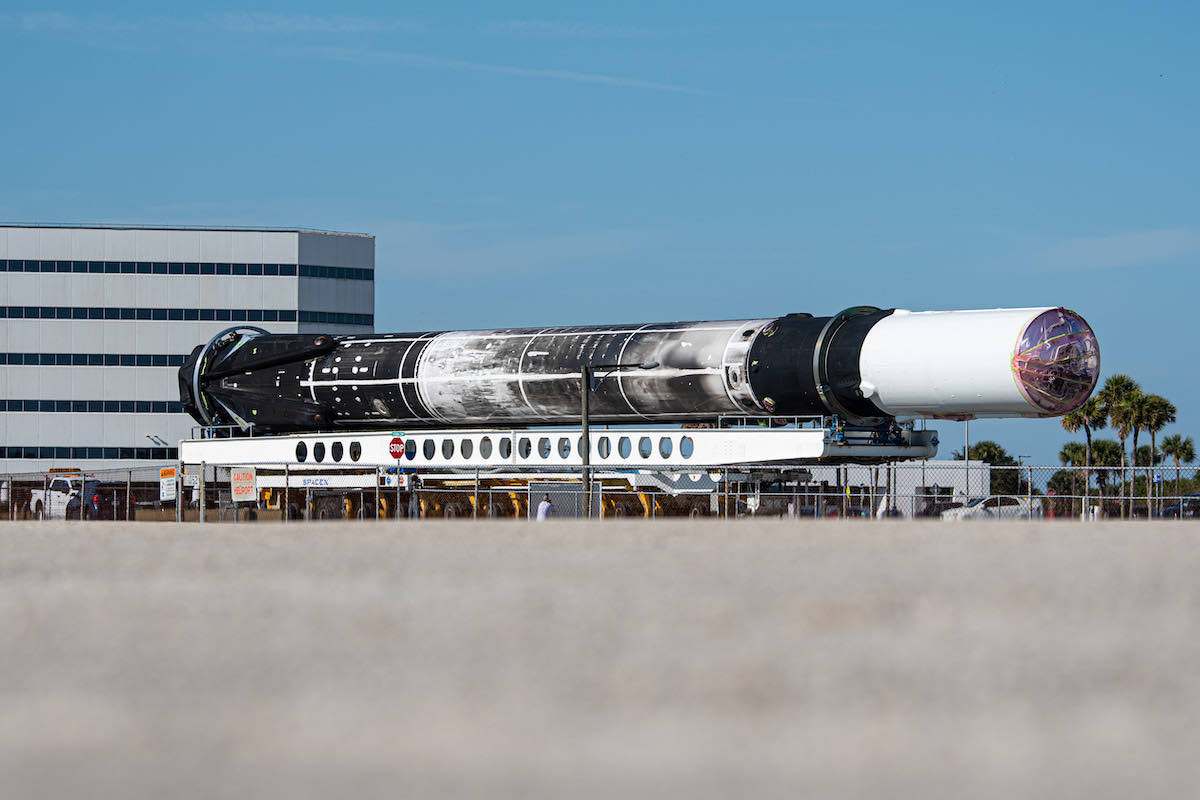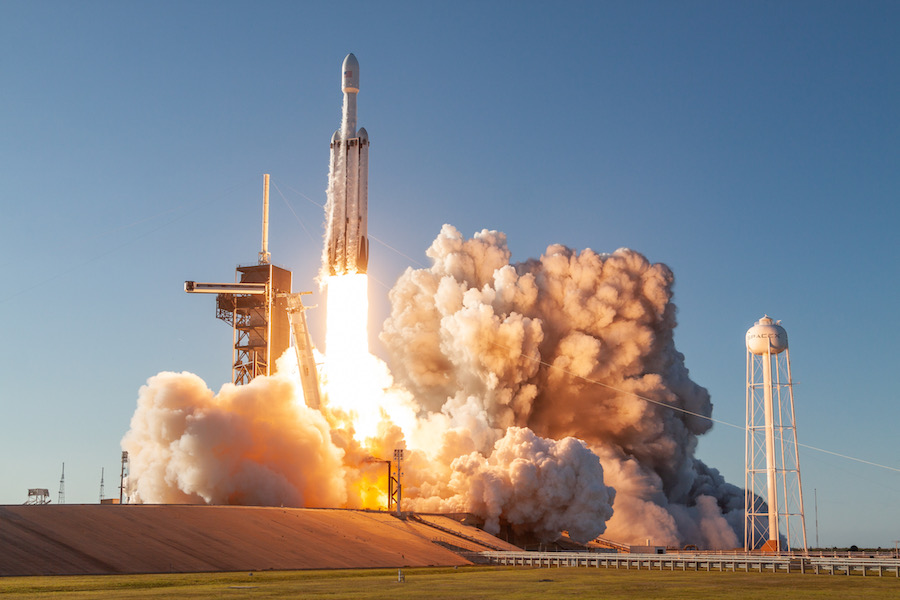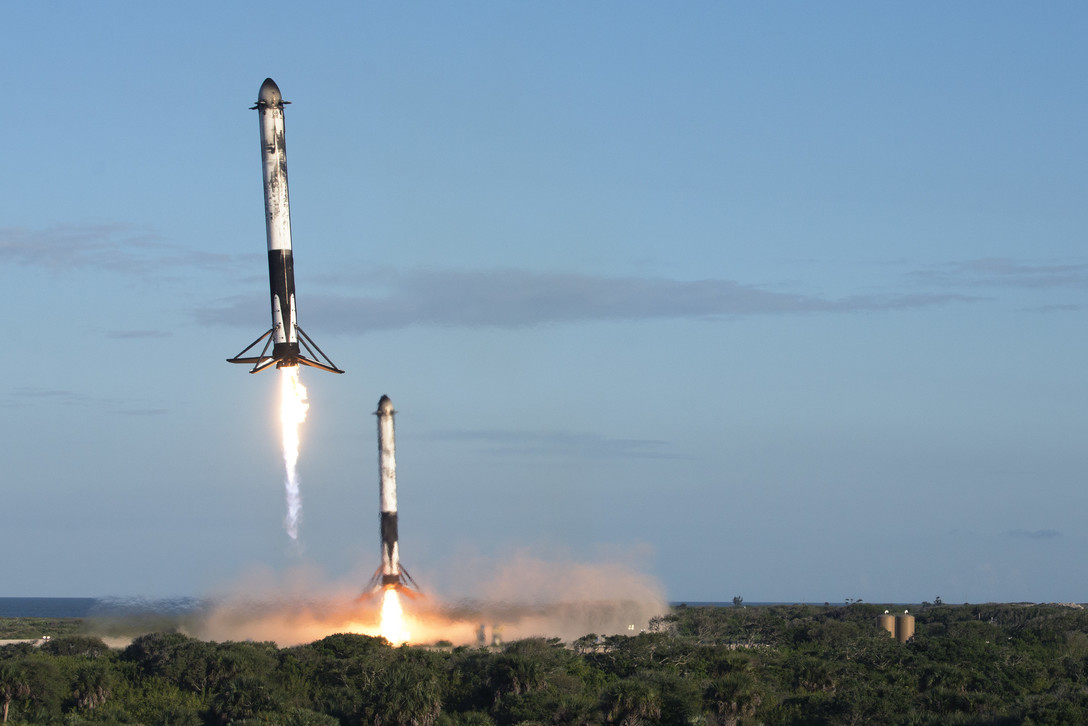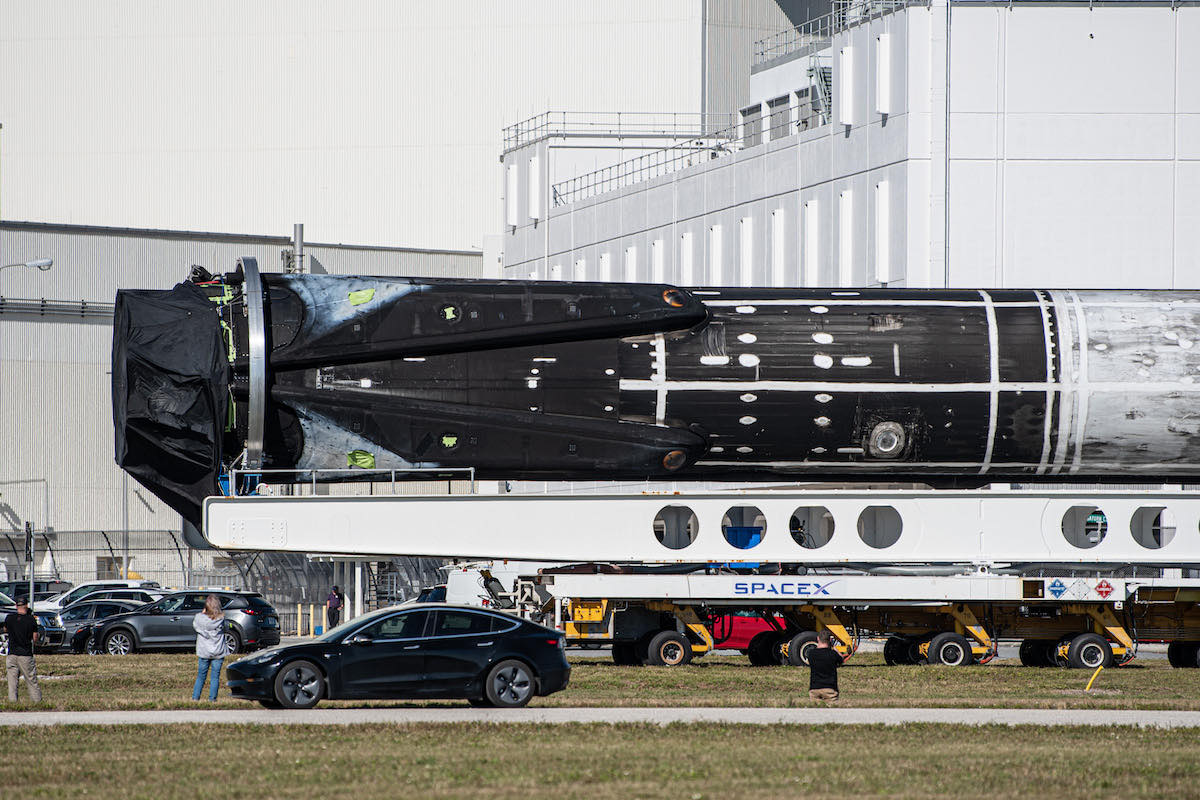
A converted SpaceX side booster that flew on two Falcon Heavy missions in 2019 will launch again Thursday as the first stage of a single-stick Falcon 9 rocket set to lift off from Cape Canaveral with an Italian radar imaging satellite.
Liftoff is set for 6:11 p.m. EST (2311 GMT) Thursday from pad 40 at Cape Canaveral Space Force Station in Florida with a COSMO-SkyMed Second Generation radar surveillance satellite for the Italian government.
The first stage booster assigned to the Falcon 9 mission mission is designated B1052 in SpaceX’s fleet. Tracking booster assignments for SpaceX launches has become a pastime for space enthusiasts. But with SpaceX’s rocket reuse program becoming more routine, the first stage used on most Falcon flights has become an afterthought, unless it’s setting a new record.
But the booster awaiting launch Thursday is noteworthy. The 15-story-tall rocket stage was previously fitted with an aerodynamic nose cone and attachment fixtures when it flew as a side booster mounted to the side of a Falcon Heavy core stage on two missions in 2019.
SpaceX created the Falcon Heavy by connecting three modified Falcon 9 booster stages together, tripling the rocket’s total power at liftoff. Each Falcon booster generates 1.7 million pounds of thrust from its nine Merlin engines, giving the Falcon Heavy more than 5 million pounds of thrust, more than any other launch vehicle currently in operation.

The Falcon Heavy rocket has flown three times, most recently with the Arabsat 6A communications satellite in April 2019 and the U.S. military’s Space Test Program-2 rideshare mission in June 2019. Both missions flew with Booster No. 1052 as a strap-on rocket stage.
The STP-2 mission flew with the same pair of side boosters as Arabsat 6A. On both missions, the side boosters fired more than two minutes during the climb into space, then returned to SpaceX’s rocket recovery zones at Cape Canaveral for nearly simultaneous landings.
SpaceX attempted to recover the Falcon Heavy core stages on both missions aboard a downrange landing platform in the Atlantic Ocean. But both cores were lost, as was the center stage on the first Falcon Heavy demonstration launch in February 2018.
The first Falcon Heavy rocket launched with a pair of side boosters that previously flew as the first stages on Falcon 9 rockets. SpaceX modified the boosters for the Falcon Heavy mission, and they landed back at Cape Canaveral and never flew again.
SpaceX officials have said Falcon Heavy side boosters and Falcon 9 first stages are interchangeable, but Falcon Heavy core stages carry additional structural stiffeners to support the load of two side-mounted boosters. That makes each center core specifically built for the Falcon Heavy.
The launch Thursday with Italy’s COSMO-SkyMed radar satellite will be the first time SpaceX has flown a rocket converted in the other direction, from a Falcon Heavy to a Falcon 9. SpaceX’s ground team removed the former side booster’s nose cone and other unique hardware for its new role in the Falcon 9 fleet.

Photographers at the Kennedy Space Center’s press site first spotted the converted Falcon first stage Dec. 8 as it passed through the spaceport from SpaceX’s rocket processing hangar on the way to one of the company’s seaside launch pads.
The sighting of the booster’s serial number — the No. 52 is painted in small print on the side of the airframe — suggested SpaceX had modified the former Falcon Heavy side booster for use as a Falcon 9 first stage.
But it wasn’t clear which mission would use the booster until SpaceX confirmed the assignment of B1052 to the COSMO-SkyMed satellite’s launch in a posting to the company’s website Thursday, just hours before the scheduled liftoff time.
Like its previous two flights, the booster will fire for more than two minutes before shutting down its Merlin engines and flipping around to fly back to Cape Canaveral. Touchdown on Landing Zone 1, located about 6 miles (9 kilometers) south of the Complex 40 launch pad, is expected nearly eight minutes after liftoff.
The Falcon 9 rocket’s second stage — brand new as it is for all Falcon missions — will direct the COSMO-SkyMed satellite along a southerly trajectory parallel to Florida’s east coast, targeting an orbit that takes the spacecraft over Earth’s poles.
It will be SpaceX’s second launch into polar orbit from Cape Canaveral this month, following a corridor that was unused from 1969 until 2020. Most polar orbit launches from the United States take off from Vandenberg Space Force Base, which offers a clear range over the Pacific Ocean to the south, without requiring a rocket to perform a steering maneuver after liftoff to fly around land masses.

The official launch weather forecast for Thursday evening calls for a 60% chance of favorable conditions for liftoff at Cape Canaveral Space Force Station. The primary weather concerns are with ground winds and cumulus clouds.
The COSMO-SkyMed continues a busy month at Cape Canaveral, which has already hosted four rocket launches since Jan. 6, including three by SpaceX. Another SpaceX launch is scheduled Saturday from pad 39A at Kennedy Space Center, when a Falcon 9 rocket is set to deliver another batch of Starlink internet satellites into orbit.
SpaceX will continue its rapid-fire launch cadence Feb. 2 with a Falcon 9 mission from Vandenberg for the National Reconnaissance Office, the U.S. government’s spy satellite agency.
Email the author.
Follow Stephen Clark on Twitter: @StephenClark1.
